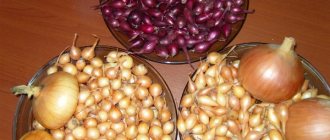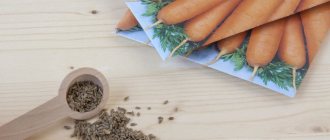Sorrel is an unpretentious vegetable plant that is one of the first to please summer residents with fresh herbs. Growing sorrel is not difficult - it is cold-resistant, grown without seedlings, and does not require special care. Let's find out how and when to sow sorrel in order to provide ourselves with vitamin greens by the right time.
Description and characteristics
Sorrel is a herbaceous dioecious plant. Annual or perennial. From the Buckwheat family. Botanical features:
- Root. Rod type, branched, fleshy, penetrates deep into the soil.
- Stem. Erect. Reaches 1 m in height. At the base it is dark purple. At the top there is an inflorescence.
- Leaves. The basal ones are long-petiolate, 15-20 cm long. They have an arrow-shaped base and a pronounced midrib. The stem leaves are arranged alternately. They have an ovoid-oblong shape, the base is arrow-shaped.
- Inflorescences. In the form of a panicle. Polygamous type. The flowers are pink or pale red. They bloom in June-July.
- Fetus. A pointed, smooth achene with sharp ribs and convex edges. Color – brownish-black. The length of the achene is up to 1.7 cm.
Sorrel grows wherever plants can survive. But it prefers moderate latitudes. It settles on the slopes of ravines, forest edges, inhabits the shores of swamps and lakes, grows in meadows and on roadsides.
The first harvest appears in May and ends in July. During the season, the leaves are cut 4-5 times every 10-15 days. Then the leaves become coarser, the concentration of oxalic acid in them increases - because of this they become less useful. Sorrel contains a lot of ascorbic acid, carotene, various vitamins, flavonoids, proteins, organic acids and microelements.
Characteristics of sorrel as a vegetable crop:
- Not afraid of winter frosts and spring frosts. In spring it can withstand temperatures down to minus 7 °C.
- Differs in early germination. The first shoots appear when the soil warms up to +3 °C.
- Prefers moist soils. With a lack of moisture, the arrows begin to throw out, and the leaf blades become rough. But in places where water constantly accumulates it grows poorly - moderate humidity is needed.
- Prefers slightly acidic or neutral soils.
- Capable of producing stable yields in one place for 4-5 years.
- Grows well in shaded places - near trees, sheds, fences.
- Cultivated sorrel has larger leaves and a less sour taste than its wild counterpart.
Selecting a location
The following features of sorrel must be taken into account:
- does not tolerate open sunny places, so it is better to plant it in shaded areas;
- Tolerates cold quite well and is capable of producing green mass even at temperatures of +2...+4 °C;
- sensitive to hot climates - it stops expelling new green leaves and freezes in growth, releasing the arrow of the peduncle very quickly;
- loves shaded areas - in such conditions it is less susceptible to diseases, the greens are juicy and have better taste;
- requires moist soil, but without stagnant water;
- unpretentious in the choice of soil, but grows better in fertile soils that tend to have a slightly acidic environment;
- for more intense growing season requires fertilization with humus;
- it grows without problems in one place for up to 5 years, after which it needs replanting so that the harvest continues to be plentiful;
- The optimal groundwater level is no higher than 1 m.
The plant produces flowers the next year after planting. But in hot climates, taking into account that the sowing took place in winter, sorrel can drive out the color even in the year of sowing.
As can be seen from the description, sorrel is quite unpretentious in growing and caring for, if you provide it with suitable conditions.
Choosing a landing site
A bed for sorrel is arranged in a place where shadow falls during the sun. It is better to plant it in the partial shade of trees. Soil characteristics are not important - sorrel produces crops under any conditions. The place for sowing is chosen in the fall to properly prepare the soil. When choosing a site, take into account the rules of crop rotation - sorrel grows well after greens, onions and pumpkin plants.
If sorrel is planted for personal consumption, 1-2 square meters will be enough for sorrel planting. m of area - the harvest from such an area is quite enough for a large family.
Where to plant sorrel
For a perennial plant, it is not necessary to choose well-lit areas, since sorrel can grow in partial shade. Therefore, you can plant it under a large tree or near a fence. Culture prefers:
- soil with a slightly acidic reaction;
- humus-rich sandy or loamy soil;
- moist and well-drained soil, where there will be no stagnation of water.
You will be interested to know: When and how to sow parsley before winter and whether it is possible
It is best to plant sorrel in an area where cabbage or celery, parsley or beets, carrots or radishes grew last year.
Soil preparation
They begin to prepare the soil in the fall. The procedure for processing the area for sorrel:
- dig up;
- remove weeds;
- in the fall, add organic fertilizer - ash and compost;
- nitrogen fertilizers are applied a couple of weeks before sowing;
- Before sowing the seeds, the beds are loosened and leveled.
The timing and volumes of fertilizers applied for planting sorrel are in Table 1.
Table 1
| Fertilizer | Weight, g (for 1 sq. m) | Season |
| humus + potassium + phosphate (6:1:1) | 2 | autumn |
| ammonium nitrate + potassium salt (1:1) | 4 | spring |
| superphosphate | 4 | spring |
| urea | 40 | spring |
| humus | 3000 | spring |
Spring planting sorrel seeds
A place for a sorrel bed is chosen in partial shade from fruit trees, bushes, a fence, a building - in a sunny area in the heat, the plant stops growing, quickly throws out the peduncle, the leaves become smaller, become hard, and bitter. To provide a family with a harvest for the whole year, a bed with an area of 1-1.5 m² is sufficient.
When planning plantings, you need to take into account that a crop grows in one place for about five years, so those plants that have similar growing conditions, for example, mint and lemon balm, are planted nearby. The roots of these plants secrete substances that improve the taste of the leaves and the quality of the tissue. Good neighborhood: celery, radish, rhubarb. Legumes, basil, parsley, and sage, on the contrary, inhibit the growth of sorrel; they have common pests, so it is not recommended to plant them nearby.
A rosette with large succulent leaves is formed on fertile black soil or loam, on loose moisture-absorbing soils. On sandy soil that quickly dries out and heats up in the heat, a peduncle quickly forms, which affects the taste. Where groundwater is located above 1 m from the surface, moisture stagnates after precipitation, sorrel grows poorly - the roots rot and often freeze in frosts.
The bed is prepared in the fall - they dig it up, remove plant remains and weed roots, add humus (5-6 kg), superphosphate (35 g), and potassium chloride (25 g) to each square of area. Sand and peat are added to heavy soils. The applied fertilizers will be enough for the plant to last for more than one year. In the spring, before planting, use a rake to apply urea (20 g/1 m²).
Seed preparation, sowing
Seeds can be sown dry, without soaking - there is enough moisture in the soil and they will germinate quickly. If it is necessary to obtain early shoots, then they are soaked in water at room temperature for two days in a gauze bag. If desired, you can add a growth stimulator, for example, Epin.
How to plant:
- loosen the soil, level the surface so that water does not roll off or stagnate;
- make furrows - depth in heavy soils is 1-1.5 cm, in light soils - 1.5-2 cm, row spacing - 15-20 cm;
- water, after absorbing the water, spread the seeds at intervals of 10 cm; if sowed at smaller intervals, the seedlings will have to be thinned out;
- cover with peat, humus (layer 1 cm);
- cover the bed with film - under the film, shoots should appear after a week, without cover - after two weeks.
Reference!
Seed material is good for two years from the date of collection, provided that storage conditions are met.
How and when are sorrel seeds sown?
Sorrel is a very cold-resistant plant, so seedlings are not needed to grow it - the seeds are sown directly in open ground. Optimal sowing dates:
- In early spring. Harvest - 40-45 days after germination.
- In summer. Seeds are sown in June - after harvesting early ripening vegetable crops. The plant manages to take root before the winter cold.
- Late autumn. Sowing is carried out before winter - in October-early November. Sow after the onset of cold weather, in dry weather, there should be frosts at night - under such conditions the seeds will not germinate and will safely survive the winter.
Conditions for sowing sorrel seeds:
- Depth. The seeds are buried 2 cm into the prepared soil.
- Distance between seeds . Seeds are sown at intervals of 4-5 cm.
- Row spacing . The optimal distance between rows is 15 cm.
The planting is mulched with peat and covered with film.
Watch a video about how sorrel seeds are sown:
Selection and preparation of material
Photo and description of what healthy seed should look like
Healthy seeds are oblong in shape and dark brown in color.
Where to get?
How to collect it yourself To collect sorrel seeds, you must follow the following instructions:
- The leaves of the selected plant are not cut off at all.
- The crop blooms in May, and the seeds ripen in the first half of July.
- The sorrel panicles on which the seeds are formed become brown. After this, they can be cut, tied into corollas and dried for 10 days.
- After this, you need to thresh the seeds by rubbing the panicles with your hands and removing debris.
- The seeds collected in this way are suitable for use for 4 years, but only if they are stored in a dry place.
Can I buy it and where?
You can purchase planting material in a specialized store or order it online. You can buy sorrel seeds in Moscow and St. Petersburg at a price of 10-18 rubles.
When choosing seeds, you need to carefully study the packaging, paying attention to the following nuances:
- marking;
- best before date;
- sowing dates;
- terms of planting in the ground.
Quite often this information on the packaging is misinterpreted. This happens due to incorrect translation, as a result of which climatic conditions are not met.
How to process and do I need to soak before the procedure?
In order for the planting material to fully germinate, it must be properly prepared by following the following procedure:
- Soak the seeds in warm water, after wrapping them in gauze. Leave them for 2 days. Due to the fact that the seeds absorb all the moisture, they will sprout faster.
- Various nutritious fertilizers can be added to the water. This will allow the plant to be stronger and more resistant to external irritants.
By doing these simple manipulations, you can get 100% germination of sorrel seeds.
Sorrel care
Sorrel is unpretentious and requires a minimum of care. After the emergence of seedlings, the main task of gardeners is to loosen and water the plantings in a timely manner. And if the sorrel is also regularly fed, several high yields are guaranteed.
When and how much to water?
Sorrel is responsive to soil moisture, so it needs regular watering. At ambient temperatures above 26 °C, the plant is depressed, grows poorly and blooms quickly. The quality of the harvest decreases. Watering helps prevent a drop in yield - it should be generous, but without stagnant water.
A break in watering and drying out of the soil provokes the throwing out of flower stalks.
Is weeding and loosening necessary?
Sorrel, like any garden crop, requires loosening to prevent the formation of a crust and the flow of air to the roots. In the spring, be sure to loosen the rows, adding humus mixed with ash to the soil. Simultaneously with loosening, weeds are pulled out.
Mulching and fertilizing
To make weed control easier, the soil is mulched. Mulch is laid between the rows. The following is used as mulch:
- peat;
- humus;
- fallen leaves.
Spring feeding will supply the sorrel with nutrients and activate the growth of young plants. Superphosphate, potassium chloride, urea, and nitrogen fertilizers are suitable for feeding. When choosing fertilizer, take into account weather conditions. When it rains, dry fertilizers are scattered; in dry weather, the plant is watered with liquid compounds.
After spring loosening of the soil, fertilizing is applied per 1 square meter. m:
- mullein solution (1:6) – 1 bucket;
- potassium-phosphorus fertilizers – 10-25 g.
To maintain high yields, plants are fed with complex mineral fertilizers after each cutting. The emphasis is on the nitrogen component.
Autumn care
The last cutting should not be carried out later than mid-September, otherwise the plant will not have time to recover by winter. For every 1 sq. m contribute:
- superphosphate – 30-40 g;
- potassium chloride – 15-20 g.
After applying fertilizer, mulch the rows with humus or compost - a layer of 3-5 cm. Cover the sorrel roots with mulch - if they are bare. For 1 sq. two buckets of mulch are enough. If the weather is dry, water the plantings, not forgetting to break out the flower stalks. There is no need to cover the plantings for the winter - sorrel is quite frost-resistant.
Care and cultivation of sorrel in open ground
Growing and caring for the plant is easy. It needs watering and fertilizing. It is necessary to clear the area of weeds and mulch. The crop also needs to be protected from pests and diseases.
Watering
The perennial will need abundant watering in the spring, during active growth. Sorrel needs to be watered regularly. When the heat sets in, it is necessary to monitor the development of greenery and dryness of the soil, which is best avoided.
Under certain weather conditions, early flowering may occur. Under normal conditions of development and growth, sorrel begins to bloom in the second year of life. If this happened earlier, the flower stalks are removed.
Fertilizing and mulching
Comprehensive care for sorrel after sowing seeds in the spring includes the stages of applying fertilizers, as well as mulching. This should be done, first of all, in early spring. After loosening the soil, the ground is mulched. This way it will be possible to maintain a sufficient level of humidity.
You can fertilize with mullein solution in the amount of a bucket per square meter. meter. Dilute the substance with water (1:6). Add 20 grams of potassium salt mixed with superphosphate. To ensure that the yield does not decrease, after each trimming of sorrel, mineral fertilizers must be introduced, giving preference to nitrogen for better development of greenery.
Sorrel is planted once every 4 years maximum. Afterwards, the leaves become coarser, their composition changes, which is not very suitable for the human body. It is better to sow again.
Diseases and pests
There are plenty of people in the garden who want to eat the sour leaves. Sorrel pests and measures to combat them are in Table 2.
table 2
| Pest | Harm/signs of illness | Control measures |
| Sorrel leaf beetle | Eats plant leaves | Spraying with ash, solutions of laundry soap and garlic, tobacco dust. If you plant pyrethrum between rows, the leaf beetle will not appear on sorrel. |
| Aphid | Drinks juice from the leaves - they turn yellow, wither, and the plants die. | Spray with infusion of wood ash, tomato tops and burdock, adding a little liquid soap. |
| Sawfly | The caterpillars gnaw off the leaves, leaving only skeletons of veins. | Prevention – removal of weeds. Spray with chamomile infusion with the addition of liquid soap. |
| Fall armyworm | It eats foliage all summer, and in the fall it moves closer to the soil. | Digging up the area, installing traps - containers with fermenting liquid (compote, honey water, molasses) are suspended at a height of 1 m. |
| Wireworm | These are click beetle larvae. They damage roots and foliage. | Timely removal of weeds. Neutralization of acidic soil. Digging up the site after harvesting. |
| Powdery mildew | All above-ground parts of the plant have a white coating. | Spraying with Bordeaux mixture. |
| Rust | There are small brown spots on all above-ground parts. Swelling and bursting, the spots spread harmful spores. | Mulching, application of phosphorus-potassium fertilizers, treatment with copper-soap solution, Fitosporin, various fungicides. |
| Downy mildew | The inside of the leaves becomes covered with spots with a gray coating. Leaves curl and become brittle. | 10 days before harvesting, the plants are sprayed with Bordeaux mixture. |
| White spot | Dirty white spots with black dots appear on the above-ground parts - petioles, stems, leaves. | Timely removal of diseased plant remains. Fungicide treatment. |
| Gray rot | The causative agent is a fungus. There are brown spots on the leaves; they grow quickly and become watery. The leaves rot, turning into a gray dusty mass. | The disease appears at high humidity. Mulching the soil with peat, pollinating the soil with fluffy lime/ash - close to the plants. |
How to grow sorrel at home in winter on a windowsill
During the cold season, the human body is more acutely aware of the lack of vitamins and microelements. To do this, many people grow various spicy herbs on their windowsills, for example, arugula, basil, and green onions. Sorrel can also be successfully grown among them.
For arranging a garden bed in a city apartment, window sills on the western or eastern side are best suited, since the crop needs bright sunlight only during the period of seed germination. In the future, she feels comfortable in the shade or partial shade in conditions of short daylight hours, which is typical for the cloudy autumn-winter period.
It is recommended to equip window sills with additional lighting devices - phytolamps or fluorescent lamps. They should be located above the plants at a height of 50-60 cm. Since sorrel is a cold-resistant crop, it is necessary to provide it with an optimal temperature within 4-20 degrees Celsius. This allows you to successfully cultivate the plant on a glassed-in loggia or veranda.
You can use any containers for planting - pots for indoor flowers, containers or plastic boxes for seedlings. It is important that they are equipped with drainage holes and have a depth of at least 20 cm for the full development of the root system.
The soil mixture can be purchased at specialized stores. If you take soil from the garden, it should be treated before sowing the seeds to prevent the development of soil bacteria.
Seeds are sown in containers to a depth of 1-1.5 cm at a distance of 5-7 cm, covered with soil on top, watered with warm water and covered with film so that seedlings appear faster. After emergence of shoots, the film is removed.
Care comes down to timely moderate watering. Fertilizing is carried out with any complex fertilizers that are used for indoor flowers. Fertilizers are diluted in accordance with the instructions for use and fertilizing is carried out 1-2 times a month.
Harvesting
Mass cutting of foliage begins approximately 2 months after sowing. Sorrel sown in spring will be ready in June. If you sow seeds in the fall, the first greenery will appear much earlier - as soon as the snow melts.
The optimal time for harvesting is in the morning, when the leaves are as juicy as possible. Ready sorrel leaves are removed by cutting or tearing off. It is recommended to leave the central leaves - they are smaller than the rest, and they will be used for a new harvest.
If you follow agricultural techniques, you can harvest 4-5 harvests per season. Cleaning ends in August. The leaves that appeared after the last cutting are left - with them the plant will better survive the winter.
The best way to prepare sorrel is freezing. With this storage method, it is possible to preserve maximum nutrients.
Reproduction of sorrel: timing of seed planting, choice of location, soil preparation
Sorrel is propagated by seeds and division of rhizomes. When dividing rhizomes, plants retain their heredity better, produce greenery faster, but start flowering earlier.
The optimal time for planting sorrel is early spring or mid-summer. During spring sowing, the ridge is dug up, 8-10 kg/m2 of organic fertilizer, 25–30 g/m2 of ammonium nitrate and superphosphate and 15–20 g/m2 of potassium chloride are added.
Three rows are sown on a ridge 1 m wide at a distance of 40 cm from each other, the sowing rate is 1 g/m2, the planting depth is 1.5–2 cm. Shoots appear after 8-12 days, then the plants are thinned out, leaving no space per square meter more than 35–45 plants.
Sorrel can also be grown by seeds or by forcing. In the first case, the seeds should be soaked in water and sown in soil in which mineral fertilizers have previously been added. Seeds are sown to a depth of 0.5 cm, in rows with row spacing of 40–45 cm or double-row ribbons with a distance between them of 40–45 cm, and between rows of 18–20 cm.
For forcing, healthy rhizomes with living buds are selected. They are planted in prepared containers. Moreover, the apical buds are left open. Large rhizomes are planted every 3–4 cm, while small rhizomes can be planted more densely. Before planting, the rhizomes are grown in a dark place at a temperature of 6-10 °C. Spray with water. You can grow it within 7-10 days. After this, the plants are brought into a warm, bright room. Sorrel should be constantly watered and fed with nitrogen fertilizers. If the rhizomes are exposed, add soil. The first greenery can be cut 15-20 days after emergence. Forcing is usually carried out within 50 days. During the autumn-winter period, sorrel is forced 2-3 times.
After sowing, the soil is mulched with peat or humus. The seedlings are thinned out, leaving a distance between plants of 4–5 cm, with narrow row spacing – 8–10 cm. Over the summer, 3–4 loosening is carried out to a depth of 4–5 cm. In the second year, the sorrel is fed using organic and mineral fertilizers in a small dose : dilute 1 tbsp per 10 liters of water. spoon of nitrophoska and water 3 liters per 1 m2. In hot weather, plants are watered. In addition, flowering shoots are removed.
To obtain an early harvest in the spring, temporary film covers are used. They are placed before the soil thaws. In this case, leaf regrowth occurs 2–3 weeks earlier than in open ground. In total, 4–5 cuttings are obtained during the growing season. The most productive year is the second year of plant growth.
When propagated by rhizomes, plants are dug up in September and cut into pieces so that each has 2–3 buds and a good root system. The rhizomes are planted on ridges with a row spacing of 30–40 cm and a distance between plants of 20 cm. Sorrel forms a large rosette of leaves in the spring of next year.
When choosing a place to plant sorrel, do not forget that this plant prefers light loamy, humus-rich soils and grows well in acidic soils.
For planting sorrel, it is better to choose the southern and southeastern slopes of the site.
The best predecessors can be early potatoes, cucumbers, white and cauliflower, carrots, radishes, beets and green crops (celery, parsley).
Sorrel can be sown in early spring, summer (July–August) and before winter (late October–November) in a row at a distance of 40 cm or in multi-line ribbons (20–25 cm between lines, 50–60 cm between ribbons). Planting depth is 1.5–2 cm.
Combination of sorrel with other plants
Sorrel is considered a neutral plant, so it grows well in any environment. But there are still recommendations for combining sorrel with other crops:
- Black currant. Sorrel grows well in the shade of its bushes. Currants benefit from this proximity - its leaves become juicier and healthier, and the fruits acquire a pleasant taste.
- Raspberries. Sorrel is placed around the perimeter of the raspberry tree. The powerful roots of sorrel prevent root shoots from spreading throughout the garden. Shading from the raspberry tree benefits the sorrel - its leaves become brighter and juicier.
Sorrel has a beneficial effect on the yield of radishes and carrots, and its presence will not harm cabbage. The plant also gets along well with garden strawberries, gooseberries, lettuce, mint, and lemon balm.
It is undesirable for sorrel to be adjacent to:
- spicy herbs;
- tomatoes;
- legumes.
Choosing a sorrel variety
The first thing you need to pay attention to is the plant variety. The most popular early ripening ones include:
- Belleville is frost-resistant, the bush does not stem. The tops are juicy and have a moderately sour taste;
- Nikolsky is a large-leaved bush, characterized by high productivity;
- Sanguine will also delight with an abundance of greenery, but the variety has a specific leaf color, including reddish veins;
- Emerald Snow is a high-yielding, highly palatable shrub that produces medium-bubble, deep green foliage.
Varieties with a mild taste and not pronounced acidity:
- Malachite;
- Maykopsky 10;
- Altaic;
- Bloody Mary - this variety, in addition to its mild taste, also has a specific leaf color, including reddish spots and veins; it is a broad-leaved bush.
Why doesn't sorrel sprout?
If the sorrel seeds are of high quality, tested for germination, but for some reason the seedlings do not appear within the time limits indicated by agricultural technology, it is probably a matter of sowing depth. Many gardeners do not know that sorrel seeds cannot be buried more than 1 cm. The seeds of this crop are very small, sown deep, they simply cannot break through the layer of soil.
When sowing seeds, do not make deep furrows - it is enough to make a small depression by running a hoe. The seeds are lightly sprinkled with soil on top.
How to plant sorrel correctly
After selecting a site, the bed is cleared of weeds, fertilizers are added to the soil and dug up along with the soil. As fertilizers you can take for each square meter of land:
- compost or humus – 6 kg;
- potassium chloride – 15 grams;
- superphosphate – 20 grams.
The fertilized dug bed is leveled and furrows are made in it up to 1 cm deep and with a distance of 15-20 cm.
Many gardeners ask why sorrel does not sprout? Their mistake may be that the furrows for sowing the seeds were too deep. It is better if they are less than 1 cm.
The value of sorrel
Sorrel is especially valued in early spring, when there are no vegetables in the garden yet. Sour sorrel leaves are added to soups and borscht, salads, and pie fillings. The green part of sorrel contains (100 g) 3% of the daily value of protein.
Young leaves are the most nutritious and beneficial. Sorrel should be consumed in moderation, as the acids it contains can negatively affect the kidneys.
Sorrel is a source of potassium, iron, manganese, iodine, organic acids, ascorbic acid (vitamin C), vitamins A, E, K, H, PP, group B and many other useful substances. In folk medicine, this plant is used as a choleretic, antiseptic, fixative, anti-inflammatory, antiscorbutic, antitoxic and hemostatic agent. Sorrel normalizes stomach function and metabolism.
Sorrel is an affordable source of vitamins, tasty and healthy. Simple agricultural techniques allow you to have fresh greens of this plant from early spring to late autumn. And thanks to the variety of varieties, everyone will choose sorrel according to their taste - sour, medium or slightly sour.
0
0
Copy link
Properties of sorrel: benefits and harms
Medicinal properties of sorrel
Gardeners value sorrel for the fact that it produces greens in the spring, when the lack of vitamins is especially acute and there are still too few fresh vegetables. The green part of plants includes proteins, carbohydrates, organic acids, fiber, vitamin C (ascorbic acid), E (tocopherol), A (beta-carotene), K (phylloquinone), H (biotin), PP (niacin) and vitamins group B: thiamine, riboflavin, pantothenic and folic acid, pyridoxine. This culture is also considered a source of potassium, calcium, magnesium, chlorine, sulfur, phosphorus, sodium, fluorine, copper, zinc, iron, manganese and iodine. The rhizome of horse sorrel contains vitamin K, essential oil, resins, iron, tannins, flavonoids, organic acids, such as caffeic and oxalic acid, as well as other substances needed by the human body. Horse sorrel is very similar in composition to such a very useful plant as rhubarb.
The young foliage of such a crop is distinguished by the greatest nutritional value and benefits, while they contain citric and malic acid. The foliage of sorrel has an analgesic, anti-inflammatory, strengthening, wound-healing, antiscorbutic and antitoxic effect, and it also helps improve digestion. For stomach upset, use a decoction of the leaves. This drink has an antiallergic and choleretic effect, helps improve liver function, and also eliminates skin itching and acne.
This plant is used for painful menstruation and menopause. For this, 1 tbsp. Just boiled water should be combined with 1 large spoon of dry leaves. The drink should steep for 60 minutes, after which it is drunk three times a day, a third of a glass in 30 minutes. before the meal.
The following composition helps with infertility: 1 tbsp. Just boiled water must be combined with 1 large spoon of sorrel, the mixture is boiled for 60 seconds, and then it is removed from the heat and allowed to cool completely. They drink the remedy in the same way as for painful periods. To increase the effectiveness of the drink, you need to add knotweed or mumiyo into it.
A decoction of common sorrel leaves is used to improve liver function, stimulate the formation of bile, and it can also stop bleeding. Products made from the rhizome of horse sorrel are used for liver diseases, uterine and pulmonary bleeding, hemorrhoids, constipation, anal fissures, and also externally for burns, gingivitis, stomatitis, wounds and skin diseases. In alternative medicine, such sorrel is used as an antitumor agent. A decoction is prepared from the leaves of horse sorrel, which helps with colds, diarrhea, colitis, entero- and hemocolitis.
Sorrel - beneficial properties and contraindications
When to harvest sorrel?
Harvesting should begin after the foliage reaches a length of 10 cm. During the summer season, this procedure can be performed at least 3 times.
Important! During the growth of sorrel, peduncles should not be allowed to appear, as this will lead to coarsening of the leaves and the appearance of rigidity in them.
It is worth noting that after collecting sorrel, any vegetable crops that will take root well in this soil can be planted in the cleared area.
After each harvest, it is worth loosening and fertilizing with ammonium nitrate. Immediately after applying fertilizer, you need to water the sorrel.
Moon phases
The lunar month lasts 29.5 days. During this period, the moon makes a full revolution around the Earth and goes through 4 phases:
- New moon
- First quarter or waxing moon
- Full moon
- Last quarter or waning moon
The influence of moon phases on plants
- The new moon is the worst time for gardening work. Do not plant or replant anything. This unfavorable period lasts three days, the day before the new moon, the new moon and the day after.
- Growing Moon - The Moon grows itself and pulls up the energy and juices of plants. This is the best time to work with plants whose fruits ripen above the ground (greens, herbs, fruits, vegetables, flowers). You can plant, replant, graft, and so on.
- Full moon - during this period it is also not recommended for planting and replanting plants, but it lasts one day. You can do weeding, fertilizing, and treating the garden from pests.
- Waning Moon - juices and energy are directed down to the roots, so try to work with root vegetables, bulbous ones.
What does “first quarter” and “third quarter” mean in the Lunar calendar
After the new moon, the Moon begins to grow, its crescent appears in the sky and gradually increases in size. At some point in the lunar month, it turns out that exactly half of the lunar disk appears illuminated to us, and the other half is not visible. This phase of the synodic lunar month is called the first quarter.
In the third quarter or last quarter, we again see exactly half of the Moon, but this is already a waning, aging Moon. It's like a mirror image of the first quarter.
See also: Favorable days for planting lungwort in 2021 according to the lunar calendar
Is it possible to visually determine what phase the Moon is in, whether it is waxing or waning?
Yes, you can. It's very easy to do.
Look at the Moon and mentally place a pencil near its “horns”. If you get the correct letter “P”, it means the Moon is waxing, but if you get “P” on the contrary, something similar to the letter “U”, it means waning.
There are some more rules and recommendations that should be followed:
- It is best to plant plants at dawn or before lunch.
- When the Moon is waxing, use mineral supplements.
- When decreasing - organic.
What plants can be planted on the waxing Moon?
The waxing moon is a favorable phase for the growth and reproduction of plants, the period of their most intensive growth.
During the waxing Moon phase, it is favorable to plant ground fruits, flowers, as well as medicinal and lawn herbs, fast-growing shrubs, vegetables, leaf crops, including roses.
During this period, it is good to sow the lawn and replant indoor flowers, plant garden flowers, and harvest.
What plants can be planted on the waning moon
During the waning Moon phase, it is recommended to care for plants, fight pests, sow and plant plants whose fruits ripen underground, various fruit bushes and trees.
Good for the waning moon:
- Planting and propagating strawberries
- Plant trees and seedlings
- Cuttings from plants
- Divide perennials
- Trim and shape trees and shrubs
- Harvest for long-term storage
- Collect seeds
What can be planted during the new and full moon?
These days the earth freezes and does not give its energy to plants, so it is better not to plant anything these days.
On full moon days it is good to collect fruits (except for root vegetables)
You can care for plants during a Lunar Eclipse
On the days of lunar eclipses, it is better NOT to carry out any work with plants!!!
Types of sorrel
Sorrel is a well-known and unpretentious crop. Grows independently, on slopes, fields, near roads. This plant is a sign of the arrival of spring, as green leaves appear about 3 weeks after the ground thaws. Sorrel is used for food - in salads and soups, it adds a piquant sourness. Planting sorrel in your own garden is not difficult.
There are 2 varieties of sorrel:
- Horse sorrel grows like a weed on roads and should not be eaten. It is tall, its small light green flowers are collected in many inflorescences. Horse sorrel is used only for medicinal purposes.
- Sour sorrel is just the kind that needs to be grown in the garden. It has wavy leaves and grows in bushes. The vitamin herb is eaten as soon as it appears in the garden.
How long does it take for sorrel to sprout?
If you plant sorrel in spring or summer, then under the film the crop will produce its first leaves within five days. Without shelter, germination will take two weeks.
When planting in open ground in spring, the harvest can be harvested after just a month and a half
If planting is done in the fall, seedlings will appear in the spring after the snow melts, also within about 14 days.
Proper care
It is important for novice summer residents to know not only the timing and days when to plant sorrel in 2021, but also how to properly care for the plantings so that they do not die. They should be periodically weeded to remove weeds and the soil loosened for better growth and respiration of the root system.
It is advisable to cut off the flower stalks, as they reduce the nutritional quality of leafy greens. After each cutting of sorrel, fertilize with urea or other liquid fertilizers. In the spring, humus or ash is scattered between the rows.
At the end of the season, before the first frost, the entire above-ground part of the crop is cut off, and to preserve viable healthy rhizomes, they are mulched, that is, sprinkled with a layer of peat or compost.











